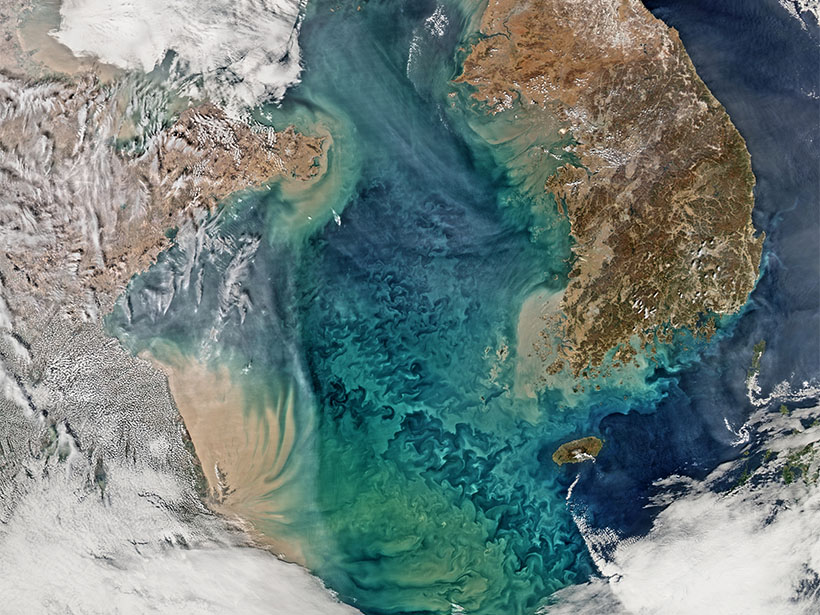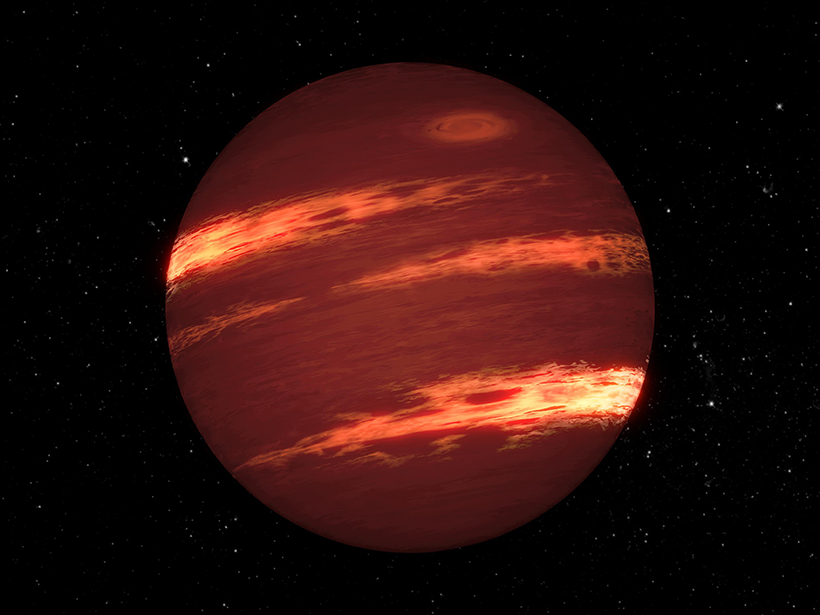Tree core chemistry can explain what happened before Mount Etna’s 2002 eruption and suggests that trees could play a role in rebuilding past eruptions.
infrared
An Explanation, at Last, for Mysterious “Zen Stones”
Laboratory experiments re-create the thin, icy pedestals that support some rocks in nature, revealing that sublimation plays a key role in the formation of these rare and beautiful structures.
New Insights into Polar Stratospheric Clouds
New satellite observations of polar stratospheric clouds have advanced our understanding of how, when, and where they form, their composition, and their role in ozone depletion.
Overture to Exoplanets
The curtain is about to rise on the James Webb Space Telescope. Let’s see what’s in store for its opening act.
The Forecast for Exoplanets is Cloudy but Bright
Clouds make climate modeling on Earth difficult. Identifying—and even defining—atmospheric phenomena on other planets is the next big exoplanet challenge.
The Earth in Living Color: Monitoring Our Planet from Above
A new special collection invites papers on a new era of remote sensing missions and instruments that will provide insights into human and climate driven changes on planet Earth.
Chasing Cyclones from Space
The pioneering use of satellite-based synthetic aperture radar to characterize tropical cyclones in near-real time has provided a crucial new tool with which to forecast powerful storms.
Record-Setting Winds on a Nearby Brown Dwarf
Infrared and radio observations reveal zonal winds moving faster than 2,000 kilometers per hour on a “failed star” in our celestial neighborhood.
Five Spitzer Discoveries About Solar Systems Near and Far
The powerful infrared space telescope is powering down after 16 years. It has revolutionized our understanding of solar systems, including hidden surprises in our own.
Christensen Receives 2018 Fred Whipple Award
Philip Christensen will receive the 2018 Fred Whipple Award at AGU’s Fall Meeting 2018, to be held 10–14 December in Washington, D. C. The award recognizes an individual who has made “outstanding contributions in the field of planetary science.”









